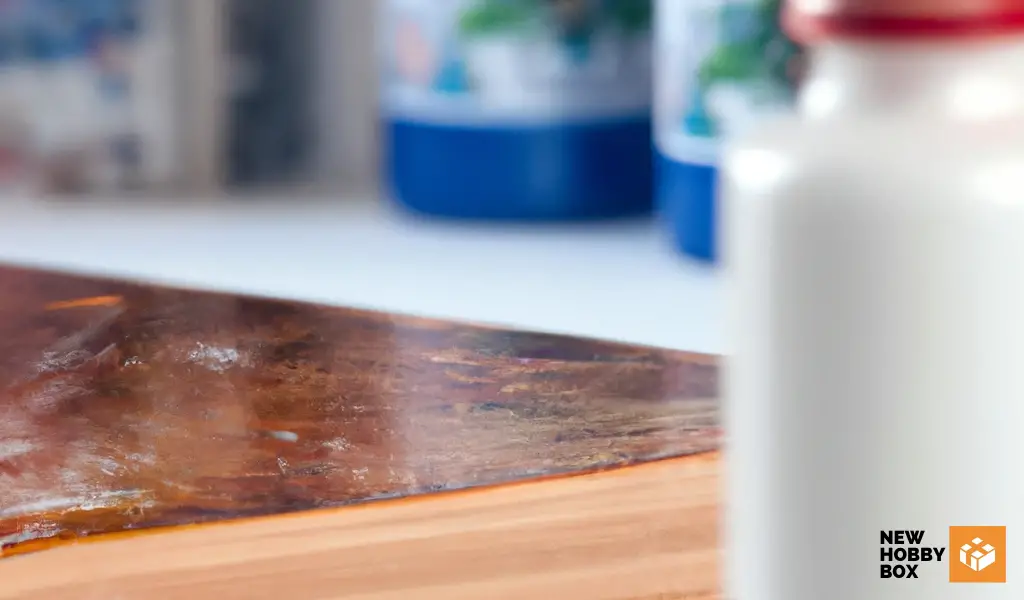
Have you ever picked up a beautiful handmade book and wondered how it was created? If so, you have the makings of a bookbinder. But whether you’re new to this beautifully rewarding hobby or you’ve been at it for some time, at some point, you realize certain techniques and materials are essential to a successful project. Glue is arguably the most important factor. Like any craft, there are a million options on the market for you to consider, so what glue is best for bookbinding?
The best glue for bookbinding is PVA (polyvinyl acetate) glue since it dries clear, is acid-free, non-toxic, and has a strong bond. It’s also easy to find and relatively affordable. PVA glue is suitable for most types of bookbinding projects, including perfect binding, case binding, and Japanese binding.
A book’s structure is the true hallmark of how skilled a bookbinder is, not the difficulty of technique. That’s why choosing the right glue is critical. In this article, we’ll cover everything you need to know about making the right sticky choice for your bookbinding project, and ultimately show you why PVA is simply the best option.
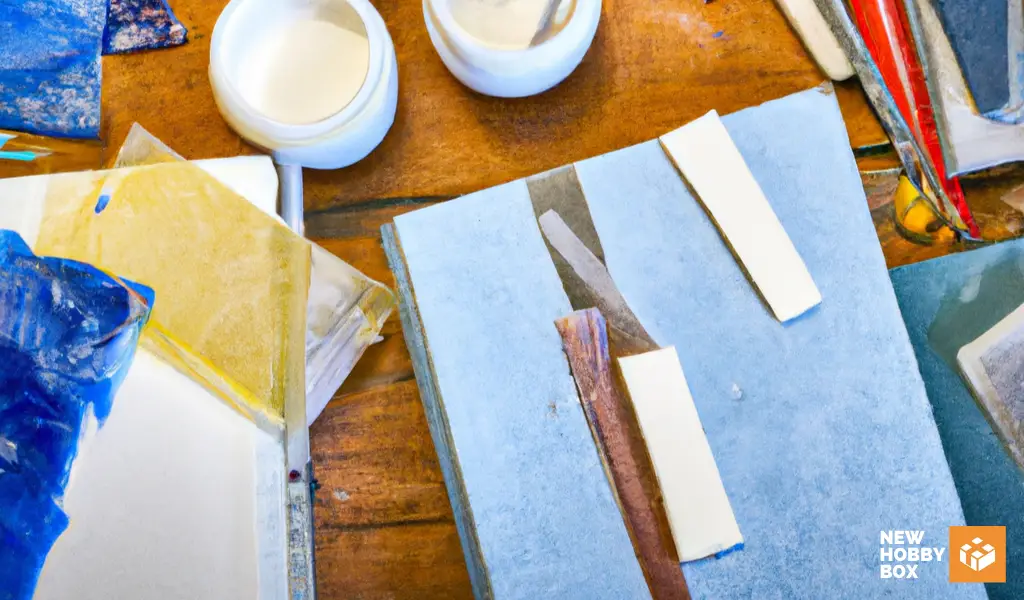
WHAT IS PVA GLUE FOR BOOKBINDING?
PVA glue, or polyvinyl acetate, is a water-based adhesive commonly used for bookbinding. It’s a popular choice due to its strong bonding ability, flexibility, and ease of use. When used for bookbinding, it creates a permanent bond that can withstand the test of time – which is a must for books.
Book-binding glue has been around for a long time and lots of hard work has gone into making the best book-binding glue. So PVA isn’t simply recommended on a whim, it’s actually been around since the early 1900s. It’s effective when used and easy to find. Perhaps the greatest strength of this glue is its versatility. It can be used for various materials, including paper, cardboard, and fabric, making it an all-purpose adhesive.
Because books need to naturally move, you need a material that is flexible but still holds its shape, which is where PVA glue shines. PVA also dries clear and doesn’t yellow over time – which is an aesthetically pleasing touch. And for beginner bookbinders, it has a longer drying time than most other types of glue, so you can still reposition any pages if needed before it hardens. And last on the long list of reasons PVA is the best choice for bookbinding glues, since it’s non-toxic and acid-free, it’s safe to touch and won’t harm your materials.
From the easiest bookbinding techniques to the most challenging, there are very few instances where the materials aren’t ideal for PVA glue. Even bindings like Coptic stitch, which relies heavily on thread vs. glue to keep signatures in place, still need a solid glue to keep the covers and other details permanently affixed. To get an idea of how we use it in Coptic stitch, watch the video above.
For bookbinding, PVA comes in two different forms: Standard and Jade. Both of these work great, but Jade is considered a little nicer and dries more quickly. Once set, PVA is permanent and will hold its shape over time, but with that extra time to fidget with it, you can fix any positioning mistakes before it’s fully cured.
If you’re on the fence about PVA, or perhaps you want to just dig into your supply of Elmer’s, you should know the answer to the following question.
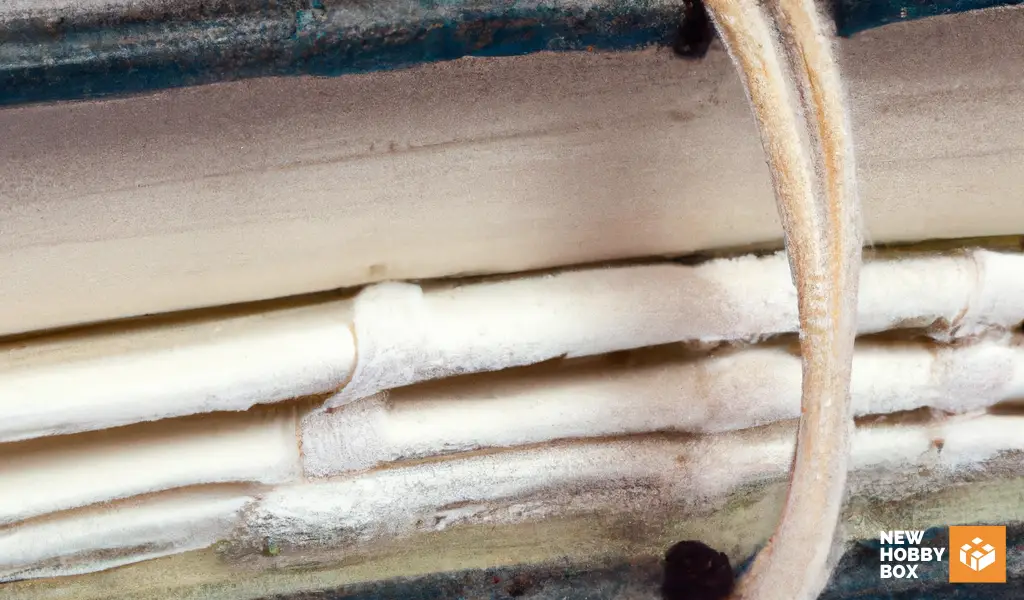
Can You Use Elmer’s Glue for Bookbinding?
Elmer’s glue is not recommended for bookbinding. Bookbinding requires an adhesive that can withstand the stress of opening and closing a book repeatedly. Elmer’s glue may dry too brittle and cause pages to fall out over time. Instead, use bookbinding glue that is pH neutral and archival quality.
Ask anyone to name a glue and nine times out of ten the first response will be “Elmer’s”. It’s a great glue if you’re crafting popsicle snowmen with kindergartners, but for bookbinding, it’s a disaster waiting to happen, and will completely erase any beautiful project you create over time and use.
CAN YOU USE ANY GLUE FOR BOOKBINDING?
No, you cannot use any glue for bookbinding. Bookbinding requires a specialized glue that is strong enough to hold the pages together but flexible enough to allow the book to open and close without damaging the spine. For these reasons, PVA glue is the most commonly used glue for bookbinding.
It probably seems like we are being paid to write about PVA, and we wish, but the truth is we want your bookbinding project to succeed so that you fall in love with this beautiful art-form of a hobby. That’s not to say you couldn’t use other glues, but PVA is a go-to. If you’re looking for other options, there are 5 we’d be comfortable recommending outside of PVA.
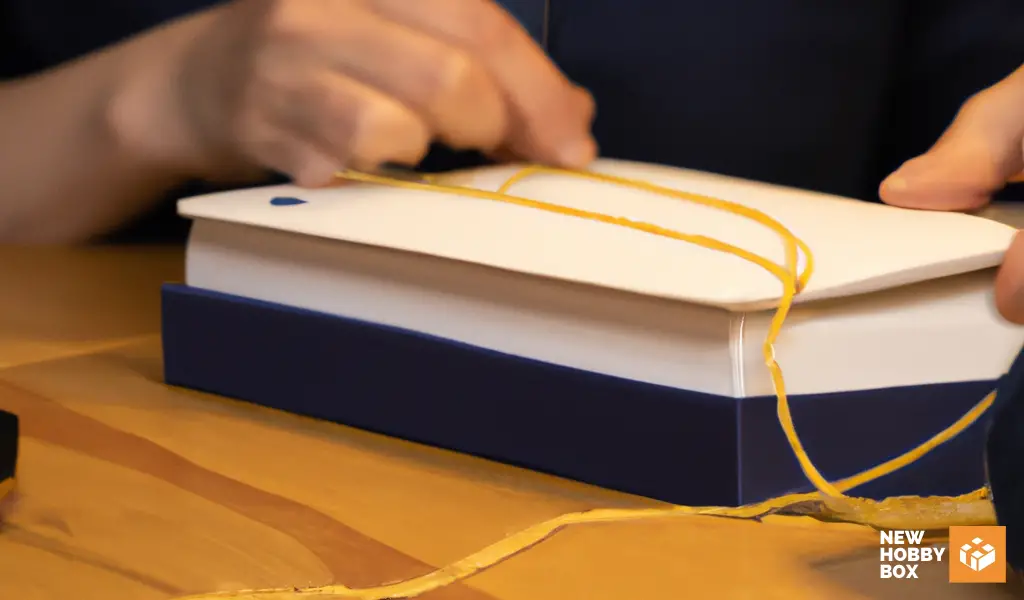
5 BEST BOOKBINDING GLUES THAT AREN’T PVA
PVA is far more popular in Europe than it is in the U.S. or Canada. So for the Americans and Canadians out there, if you’re in the market for something besides PVA, make sure to keep the following factors in mind: your bookbinding glue should be pH neutral (acid-free), strong, flexible, dry clearly, and non-toxic. These are the 5 best glue alternatives to PVA:
1. Lineco Books by Hand pH Neutral Adhesive
This is one of the most recommended glue for bookbinding, along with PVA glue. It’s loved by customers and never disappoints. Lineco Books Adhesive is made with the best ingredients and the quality is fantastic. It’s strong, doesn’t wear over time, is flexible, and is waterproof.
The ingredients used are clean and safe so you don’t have to worry about any toxins. Even the manufacturing is convenient as it has an easy pour cap and a thin consistency. The price is a little higher than others, but you get a lot in the bottle and it lasts a long time.
2. Gane Yes Paste All-Purpose Stik Flat Glue
This glue isn’t specifically for bookbinding but is an overall great glue. It’s water-based so it’s safe and does not contain any toxins. Gane Yes is an archival glue, so it does not wear down over time or turn the pages yellow as other glues do.
This glue takes even longer to dry than PVA so it gives you time to rearrange if you need to. Unlike Lineco the consistency is super thick but it can be thinned with just a little bit of water. Gane Yes comes in pints so it will last forever and is worth the money.
3. Gorilla 2 Part Epoxy Adhesive
Gorilla is a pretty popular brand when it comes to tape and glue. Now, this specific product should be used for repairs only, as it’s incredibly strong. We’ve used this exact glue to reattach our sink to the countertop (long story).
Gorilla products are known for their utility, and although bookbinding may not be the most common use case, it’s absolutely going to hold a spine that won’t stay put. You have about 30 seconds to set it though, so make sure you know what you’re doing. The glue is clear, extremely strong, and waterproof, yet still gentle enough that you could use it for a spine repair.
4. Perfect Paper Adhesive
Perfect Paper is very similar to PVA glue and is great for bookbinding. It is thinner than the other glues and is super easy to apply. The glue is strong, UV resistant, waterproof, and doesn’t age with time, and because it’s so thin, you can barely see it. It works best on smaller books like journals and scrapbooks but it can be used on larger volumes of pages like novels. Also, if you’ve followed our tutorial on making paper by hand, this type of glue will work just fine for that. Although we’d still recommend PVA.
5. Elmer’s Craft Bond Fabric and Paper Glue
We know we know… we’ve talked down on Elmer’s glue, but we were specifically referencing the classic white bottle you get in grade school. While Elmer’s seems like a brand for kids (because they mostly are), they make a fantastic bookbinding glue too. You won’t get by with just any old Elmer’s glue though, so make sure to get the Craft Bond Fabric and Paper Glue.
This glue is very thin yet very strong. It is also waterproof and dries transparent. Because it’s for both fabric and paper it can be used on any part of the book you are binding or repairing. The way the bottle is designed makes it simple to apply with the pointed tip.
The Craft Bond Fabric and Paper Glue is non-toxic and acid-free, so it won’t damage books. It’s stretchy as well, so it works well on book spines.
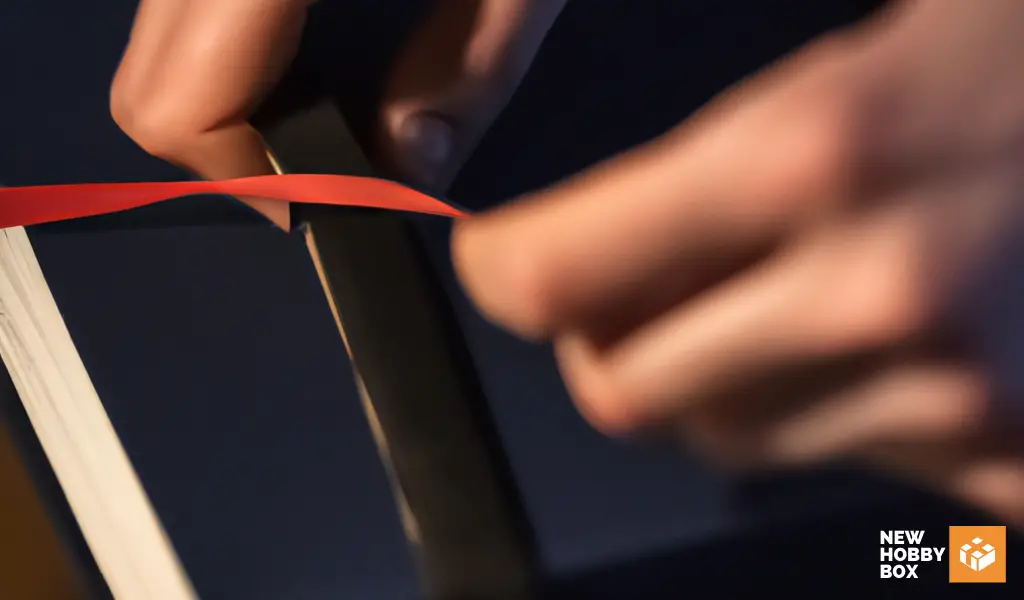
INVEST IN THE RIGHT GLUE FOR BOOKBINDING
We never thought we’d write such an impassioned article about bookbinding glue, but after making dozens of books and running through countless supplies needed to bind a book, we’ve learned many valuable lessons about going cheap or using what’s available. Binding a book takes tremendous patience and time, and it’s a tragedy when all your work falls apart simply because you chose the wrong adhesive. So please learn from our mistakes, and make the right choice. PVA for the win.
If you’re curious about which other supplies to use in bookbinding or what the easiest techniques are, be sure to check out the bookbinding section of New Hobby Box. You’ll also find one of our most-followed tutorials on how to Coptic stitch a book.
